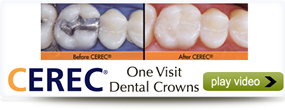IN ONE OF HIS sonnets, Shakespeare described the reeking breath of his lady love, and the subject came up again in two of his plays. He sets a creepy mood with the “black contagious breath” of the night in “King John” and includes the line “his breath stinks with eating toasted cheese” in “Henry IV Part II.” Unfortunately, smelly breath was a common problem for that time period, and so were bad teeth.
The Class Divide of Early Modern Dental Health
Most people in Early Modern England were missing one or two teeth and they had to deal with a lot of cavities, but the problem was actually worse for the wealthy and especially the queen. Sugar was the hot new fad among the aristocracy in Elizabeth I’s day, but it was only available as an expensive import. In fact, sugar was so expensive that it was almost its own currency, and only the wealthy could afford it as an ingredient in their food.
Tooth-Rotting Luxury
Unfortunately for all those lords and ladies, they didn’t realize the dental health implications of luxurious sugar consumption. It wasn’t long until black teeth became a symbol of wealth, which gave rise to the perplexing fashion among the lower classes of artificially blackening their teeth to appear richer.
The Royal Teeth
Few felt the effects of sugar as much as Queen Elizabeth herself. The people around her knew better than to gossip about her appearance, but late in her life, one French ambassador is recorded to have said that her teeth were “very yellow and unequal,” and a German traveler went even further, describing “her teeth black (a fault the English seem to suffer from because of their great use of sugar).”
Despite her dental troubles, Elizabeth was terrified of dental treatment (or what passed for it back then). Before she was willing to undergo a tooth extraction, a bishop had to allow one of his own teeth to be pulled to prove it would be worth it. (To be fair, they didn’t have anesthesia available, so the prospect would have been much less pleasant than getting modern dental work.)
Dental Hygiene in the Elizabethan Era
What did the English do to try to keep their teeth healthy in that time period? They would use quills or wood for toothpicks and wash off plaque with a cloth. (We definitely prefer our modern toothbrushes.) If a tooth became too painful to tolerate, they could go to a surgeon to have it removed. If a surgeon was too expensive, a “tooth-drawer” or even a blacksmith could do it more cheaply.
However, some wealthy people were making matters worse for themselves by brushing their teeth with sugar paste:
For Our Teeth’s Sake, We’re Happy to Live in Modern Times
As fascinating as it is to look back on the history of dental health, it’s such a relief to live in a time when we get to enjoy the benefits of so much dental knowledge that we had to divide it into twelve different specialties, from endodontists to orthodontists to pediatric dentists and more. Make sure you’re scheduling regular appointments and keeping up with your dental hygiene habits!










